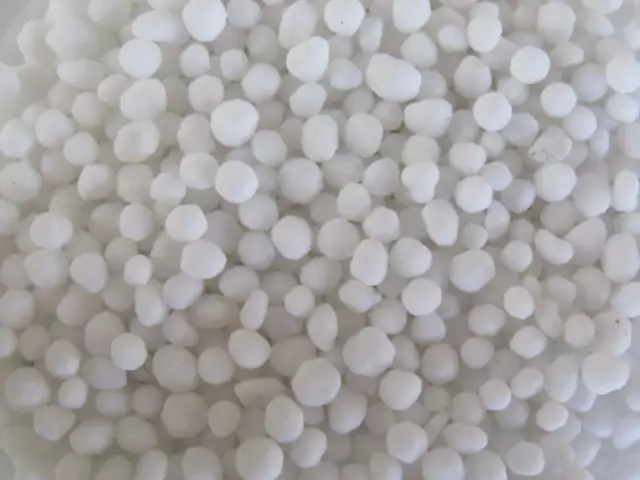- Author Rachel Wainwright [email protected].
- Public 2023-12-15 07:39.
- Last modified 2025-11-02 20:14.
Urea
Instructions for use:
- 1. Release form and composition
- 2. Pharmacological properties
- 3. Indications for use
- 4. Contraindications
- 5. Method of application and dosage
- 6. Side effects
- 7. Overdose
- 8. Special instructions
- 9. Application during pregnancy and lactation
- 10. Drug interactions
- 11. Analogs
- 12. Terms and conditions of storage
- 13. Terms of dispensing from pharmacies
- 14. Reviews
- 15. Price in pharmacies
Prices in online pharmacies:
from 66 rubles.
Buy
Urea is a drug with a diuretic and dehydrating effect.
Release form and composition
The product is produced in the form of a powder substance (100, 250 or 500 g each in dark glass jars).
Pharmacological properties
Pharmacodynamics
Urea is an osmotic diuretic. Under its action, an increased osmotic pressure is created in the renal tubules, which causes significant diuresis. Urea is 50-60% filtered through the glomeruli without the effect of reabsorption, and does not undergo metabolic processes.
Due to the dehydrating effect of urea, toxic pulmonary edema and cerebral edema are prevented and reduced; it lowers intracranial and intraocular pressure.
Due to an increase in osmotic pressure, fluid from tissues and organs actively enters the bloodstream. Urea does not penetrate well into the tissues of the eye and through the blood-brain barrier, thus creating a significant difference between the osmotic pressure of blood and cerebrospinal fluid and eye fluids.
The hypotensive effect of the drug on intraocular and intracranial pressure is not directly related to the diuretic effect; it is assumed that the main role in this process is played by central mechanisms, in particular, the hypertonic solution affects the osmoreceptive fields located in the hypothalamus.
With topical application of urea (wet dressings, washing and irrigation), the wounds are cleared of necrotic masses and heal faster. The drug has a keratolytic effect.
Pharmacokinetics
With intravenous administration of a urea solution, the therapeutic effect occurs in about 15-30 minutes, and the maximum - after 1-1.5 hours. The duration of action of the drug is from 6 to 14 hours.
When taken orally, the dehydrating effect on brain tissue appears after a few hours.
Indications for use
- Early stages of cerebral edema (neurosurgical practice);
- Glaucoma, especially during acute attacks (ophthalmology);
- Onychomycosis, ichthyosis, hyperkeratosis, purulent wounds (external use).
Contraindications
- Hepatic and / or renal failure (severe course);
- Dehydration;
- Edema of the brain against a background of hemorrhagic stroke (due to the possible development of repeated bleeding);
- Hypersensitivity to drug components.
Patients with chronic heart failure, renal and / or hepatic failure and hypovolemia. Urea should be used with caution, under medical supervision.
Instructions for use of Urea: method and dosage
For intravenous administration, the Urea solution should be prepared immediately before the procedure under sterile (aseptic) conditions. The use of pre-prepared solutions can lead to the destruction of red blood cells (hemolysis).
As a rule, a 30% solution is used prepared in a 10% glucose solution. Dissolution of the powder occurs with the absorption of heat (cooling of the solution), therefore, before the introduction, the solution must be kept until its temperature reaches room temperature.
Urea solution is injected drip at a rate of 40-60-80 drops per minute. An increase in the rate of administration to 80-120 drops per minute is recommended only in cases where it is necessary to obtain a quick and maximum effect.
Usually 0.5-1.5 g / kg (on average - 1 g / kg) of the patient's body weight is prescribed. As a rule, the effect occurs after 15-30 minutes. According to indications, it is possible to re-inject the drug with an interval of 12-24 hours, but no more than 2-3 times. As a result of the use of Urea with cerebral edema, intracranial pressure decreases, the tension of the dura mater decreases, pulsation appears; with glaucoma, intraocular pressure decreases.
Inside Urea is prescribed as a 30% or 50% solution in sugar syrup. Average doses are 0.75-1.5 g / kg. The antihypertensive effect in glaucoma is observed after 30-45 minutes regardless of the method of administration of the drug (oral or intravenous drip). When the solution is taken orally with cerebral edema, a dehydrating effect on the brain tissue appears only after a few hours.
In order to prevent imbalance in the water balance on the first day after the application of Urea, an isotonic solution of glucose or sodium chloride (500-800 ml) with ascorbic acid (0.2-0.3 g) and thiamine (0.1-0, 15 g). The simultaneous appointment with other diuretics is unacceptable. When the solution is injected into an unconscious or anesthetized patient, a catheter must be inserted to drain urine into the bladder.
It is impossible to allow the drug to get under the skin during intravenous administration (in order to avoid the development of necrosis and tissue irritation).
As a keratolytic agent in the treatment of onychomycosis, 30% ointment of Urea, ichthyosis and hyperkeratosis is used - 10% cream. Outwardly, the preparation of urea in the form of an ointment and cream is applied to the affected areas of the skin.
When cleaning purulent wounds from necrotic masses, irrigation and wet dressings with 10% Urea solution are used.
Side effects
According to the instructions, Urea can lead to dyspeptic disorders, manifested in the form of nausea, vomiting and heartburn.
With parenteral administration of urea, the following can develop: phlebitis at the injection site, dry mouth, thirst, increased blood pressure, headache, confusion, weakness, dizziness, drowsiness, fever, palpitations, subdural or subarachnoid bleeding, venous thrombosis, electrolyte imbalance. In the first hours after administration of the drug, a short-term increase in the concentration of residual nitrogen in the blood is possible.
Overdose
To date, no cases of overdose have been reported.
special instructions
During therapy, it is necessary to monitor blood pressure, urea nitrogen concentration, electrolytes, and renal function.
It is possible to use Urea for heart failure (simultaneously with loop diuretics) and hypertensive crisis with encephalopathy.
Application during pregnancy and lactation
Adequate and well-controlled studies of the use of urea during pregnancy and breastfeeding have not been conducted. It is assumed that the substance may have an adverse effect on the fetus (such conclusions were obtained during the study of urea in animals). Despite this, it is allowed to use the urea drug in the form of a solution in pregnant women if the expected benefit to the mother significantly outweighs the risk to the child. The decision on the appointment of urea is made by the attending physician.
Drug interactions
Urea increases the excretion of lithium (Li +) by the kidneys.
Other diuretic drugs, including carbonic anhydrase inhibitors, may reduce the effect of the drug (dose adjustment may be required).
Analogs
Urea analogs are: Urea, Ureafil, Ureverd.
Terms and conditions of storage
Keep out of reach of children at temperatures up to 25 ° C (in sealed packaging).
Shelf life is 4 years.
Terms of dispensing from pharmacies
Available without a prescription.
Reviews about Urea
On forums and sites with reviews, the most common messages are about urea in various creams. There is practically no feedback on the use of this substance intravenously or orally.
Urea creams have proven to be a good remedy for corns and corns. They moisturize the skin, make it softer and softer, relieve heaviness and fatigue from the legs. According to reviews, urea and preparations are not based on it, in addition to their effectiveness, they have another significant plus - this is their low cost.
Price for Urea in pharmacies
The price of Urea depends on the form of release and the manufacturer and starts at 58 rubles. Means of production Nizhpharm (Russia) - from 78 rubles.
The cost of ointments with urea, for example, Uroderm ointment (Retinoids, Russia) - from 124 rubles.
Urea: prices in online pharmacies
|
Drug name Price Pharmacy |
|
Paramedic Salicylic foot balm Mycosis OFF 14% urea and Octopirox 75 ml 1 pc. RUB 66 Buy |
|
Vitateka Phyto-cream for feet Softening Celandine and Urea 75 ml 143 r Buy |

Maria Kulkes Medical journalist About the author
Education: First Moscow State Medical University named after I. M. Sechenov, specialty "General Medicine".
Information about the drug is generalized, provided for informational purposes only and does not replace the official instructions. Self-medication is hazardous to health!






